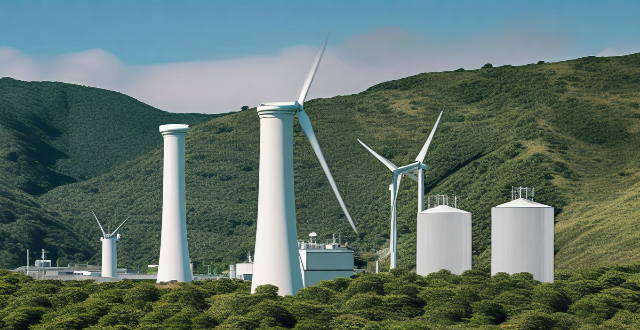Renewable energy sources, such as solar, wind, hydro, geothermal, and biomass, play a crucial role in the clean energy revolution. These sources are sustainable, have minimal impact on the environment, and offer numerous benefits including reducing greenhouse gas emissions, enhancing sustainability, improving energy security, and providing economic benefits. The use of renewable energy is growing with applications in residential, commercial, and transportation sectors. However, challenges like storage and transmission issues, intermittency, cost, and public perception need to be addressed for wider adoption.

The Role of Renewable Energy Sources in the Clean Energy Revolution
Renewable energy sources play a crucial role in the clean energy revolution. They are essential for reducing greenhouse gas emissions, mitigating climate change, and achieving a sustainable future. In this article, we will explore the various aspects of renewable energy and its significance in the clean energy revolution.
What is Renewable Energy?
Renewable energy refers to energy that is derived from natural processes that are replenished constantly. These include solar, wind, hydro, geothermal, and biomass. Unlike fossil fuels, which are finite and contribute to environmental degradation, renewable energy sources are sustainable and have a minimal impact on the environment.
Why is Renewable Energy Important?
Renewable energy is important for several reasons:
- Reducing Greenhouse Gas Emissions: Renewable energy sources produce significantly fewer greenhouse gas emissions than fossil fuels. By transitioning to renewable energy, we can reduce our carbon footprint and mitigate the effects of climate change.
- Sustainability: Renewable energy sources are sustainable because they rely on natural processes that are constantly replenished. This means that we can continue to use them without depleting our resources or harming the environment.
- Energy Security: Renewable energy sources provide energy security by reducing our dependence on foreign oil and other non-renewable resources. This makes us less vulnerable to price fluctuations and supply disruptions.
- Economic Benefits: Investing in renewable energy creates jobs, stimulates economic growth, and reduces energy costs over time. It also helps to diversify our energy mix and reduce our reliance on a single source of energy.
How is Renewable Energy Being Used?
Renewable energy is being used in various ways to power our homes, businesses, and transportation systems. Some examples include:
- Solar Power: Solar panels convert sunlight into electricity, which can be used to power homes and businesses. Solar power is becoming increasingly popular due to its affordability and efficiency.
- Wind Power: Wind turbines convert wind energy into electricity. Wind power is a reliable source of energy that can be used to supplement traditional power sources.
- Hydroelectric Power: Hydroelectric power plants generate electricity by harnessing the energy of flowing water. This is one of the oldest forms of renewable energy and remains an important source of clean energy today.
- Geothermal Energy: Geothermal energy is generated by tapping into the heat stored beneath the Earth's surface. This form of renewable energy is particularly useful in areas with high geothermal activity.
- Biomass Energy: Biomass energy is generated by burning organic matter, such as wood or crops, to produce heat or electricity. This form of renewable energy has been used for centuries but has seen renewed interest as a way to reduce waste and create energy.
Challenges and Opportunities for Renewable Energy
While renewable energy offers many benefits, there are also challenges that must be addressed in order to fully realize its potential. These include:
- Storage and Transmission: One challenge facing renewable energy is how to store excess energy and transmit it efficiently across long distances. Advances in battery technology and smart grid systems are helping to address these issues.
- Intermittency: Renewable energy sources like solar and wind are intermittent, meaning they only produce energy when conditions are favorable (e.g., when the sun is shining or the wind is blowing). This requires backup systems or storage solutions to ensure a steady supply of energy.
- Cost: While the cost of renewable energy has decreased significantly in recent years, it can still be more expensive than traditional fossil fuels in some cases. Government subsidies and tax incentives can help make renewable energy more affordable for consumers and businesses alike.
- Public Awareness and Acceptance: Despite its many benefits, renewable energy still faces public perception challenges related to cost, reliability, and aesthetics. Education campaigns and outreach programs can help raise awareness about the benefits of renewable energy and encourage greater adoption among consumers and businesses.